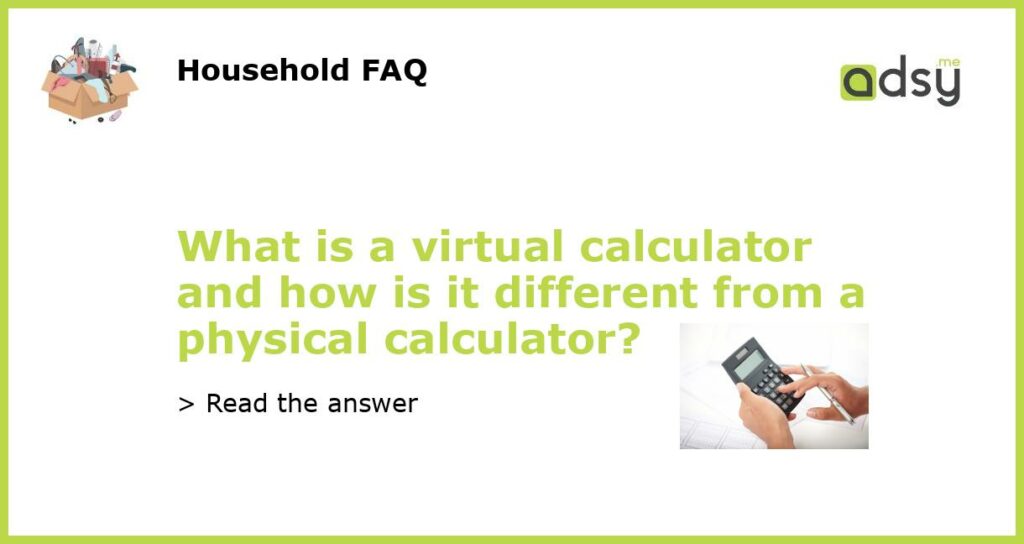What is a Virtual Calculator?
A virtual calculator is a software that can perform mathematical equations just like a physical calculator. Instead of being a tangible device, virtual calculators exist in the form of applications or softwares on devices such as smartphones, tablets and computers. With virtual calculators, users can easily perform arithmetic calculations, scientific calculations and algebraic equations among other mathematical problems.
How is it different from a physical calculator?
The main difference between a physical calculator and a virtual calculator is the physicality of the calculator. Physical calculators are tangible devices while virtual calculators exist in software or application form. Additionally, virtual calculators offer more advanced features than the traditional physical models. For instance, virtual calculators can be customized with personalized skins, advanced graphing capabilities, and high-definition displays for easy viewing. Virtual calculators also have the ability to back up data, and store them online for use when needed.
Advantages of Using Virtual Calculators
Virtual calculators have a host of advantages such as convenience. They are lightweight and easily portable because most people carry their smartphones or laptops everywhere they go. Virtual calculators are fast, reliable and efficient. They can perform complex calculations such as Fourier analysis or trigonometry, which is not possible with a basic physical calculator. Virtual calculators also have functionality that allows them to convert currency, and perform conversions of units, making them useful for business and finance related tasks.
Disadvantages of Using Virtual Calculators
One of the main disadvantages of virtual calculators is their dependence on technology to function. Without power or internet access, virtual calculators cannot be used. Another disadvantage is the fact that virtual calculators rely on batteries that may run out of charge, rendering them unusable until they are recharged. Additionally, using virtual calculators may require a learning curve, especially for people who are used to physical calculators, and may not have the same level of tactile feedback that a physical calculator provides.
In conclusion, virtual calculators are powerful tools that offer many advantages over traditional physical calculators. They are more convenient, efficient and offer advanced features that enable users to perform complex mathematical equations effortlessly. Though virtual calculators have some disadvantages, the advantages outweigh them, and it is clear that they are the future of calculators in our increasingly digital world.






